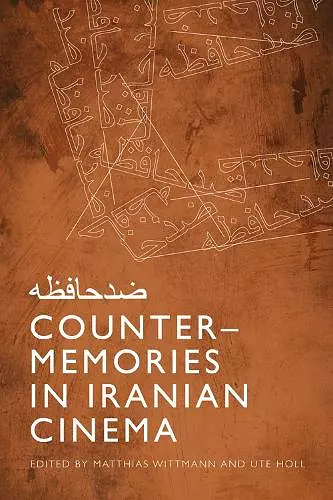Counter-Memories in Iranian Cinema
Ute Holl editor Matthias Wittmann editor
Format:Paperback
Publisher:Edinburgh University Press
Published:31st Aug '23
Should be back in stock very soon

Reassesses the post-revolutionary Iranian Cinema from a new mnemo-political perspective Establishes a new framework of understanding the tensions between hegemonial and excluded aesthetics and rhetorics, between censorship and resistance, carving out resistant points of remembering within and outside state-controlled cinema Exposes silenced experiences and suppressed struggles that nevertheless articulate themselves in cinematic forms Looks for ruptures, frictions and sudden re-distributions within the trauma- and memoryscapes of Iranian Cinema Introduces new readings of Iranian films and thus suggest a theory of trauma and memory inspired by cinematic procedures and orientated towards specific materials Far?d ad-D?n-e ?A???r's Persian folk tale The Conference of the Birds relates the quest by thousands of pilgrim birds for an ideal king, the mythical bird called S?morgh. At the end of the quest, the surviving birds recognise that the longed-for king is nothing other than the reflection of their own existence. But what about those other birds that were not able to become part of the final representation? This groundbreaking book calls them 'counter-memories'; memories that are barred from hegemonic history, but are, nevertheless present in cinematic forms. Due to the strategic and artistic interventions of a range of Iranian filmmakers, such as Abbas Kiarostami and Shahram Mokri, Ali Hatami and Tahmineh Milani, Kianoush Ayari and Rakshan Banietemad, the history of post-revolutionary Iranian Cinema is also structured by counter-memories, with the potential to destabilise officially fabricated success stories of revolution, war and sacred defence. Counter-Memories in Iranian Cinema establishes a new framework for understanding the tensions between censorship and resistance, helping to carve out resistant points of remembering both within and outside state-controlled cinema.
"This collected volume is a vital cinematic intervention in master narratives of modern Iran from the 1960s to 2014. Based on the premise that films can work as a counterforce to official histories of institutions, societies, and politics, the book convincingly posits cinema as counter-history. Foregrounding the plurality of histories, memories, material culture, and audiovisual archives, the brilliant chapters in this volume boldly attest to how cinematic memoryscapes and afterimages make 'hidden history' visible and tangible. Scholars and students of Iranian cinema, media, and modern history interested in going beyond conventional understandings of film and history will appreciate this volume's theorizing of film as a site of counter-memory production." -Golbarg Rekabtalaei, Seton Hall University
ISBN: 9781474479769
Dimensions: unknown
Weight: unknown
272 pages